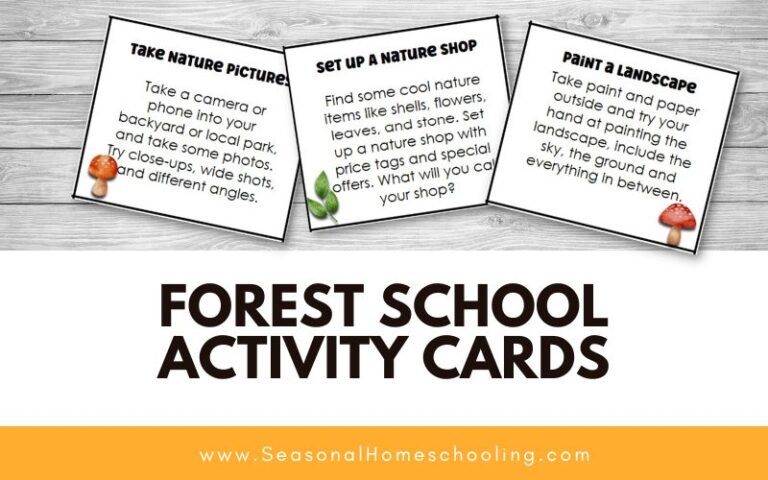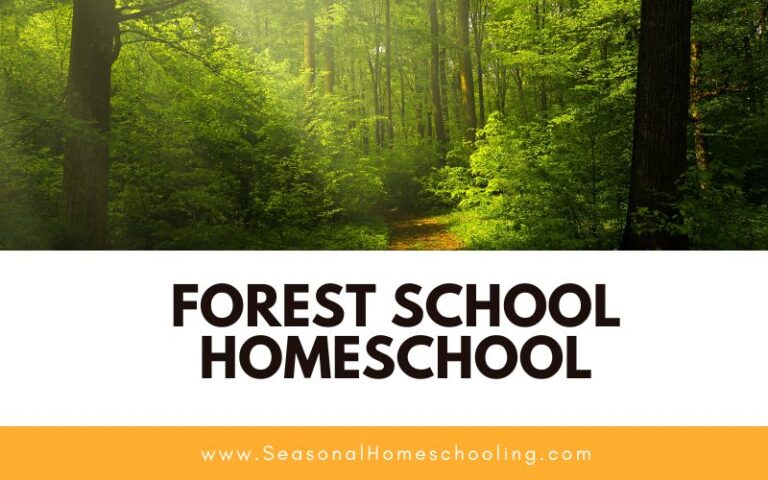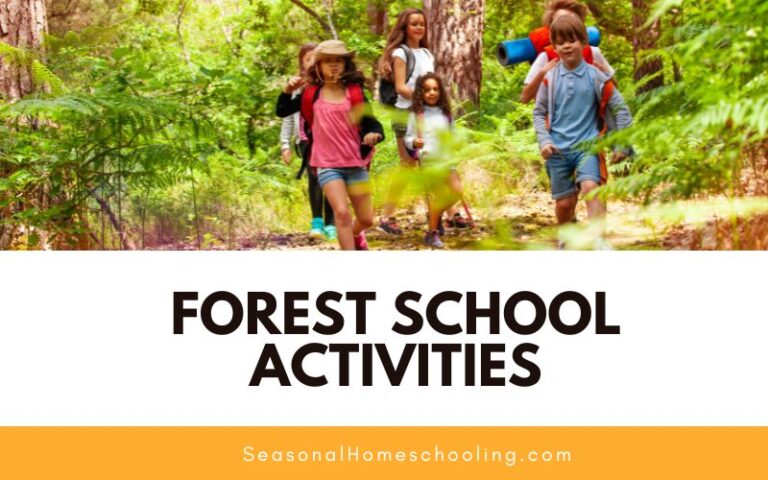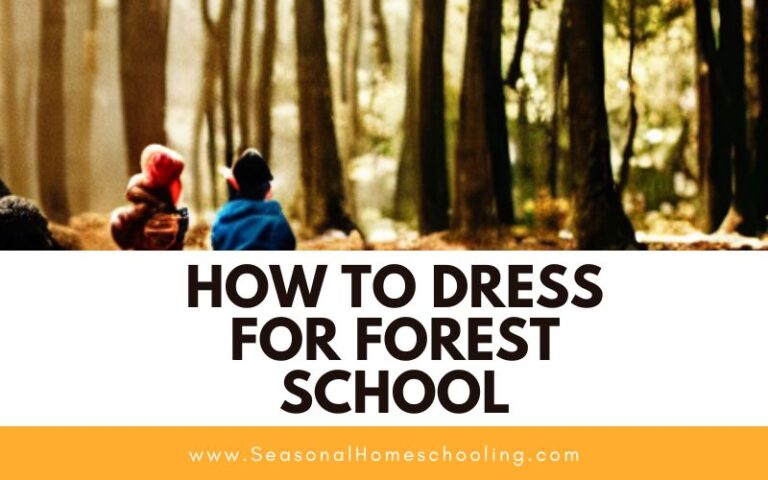Forest School Learning Opportunities
A forest setting can be a rich and rewarding learning environment for homeschoolers of all ages and interests. By exploring the diverse forest school learning opportunities offer, you can help your children develop a deep appreciation and understanding of the natural world, as well as important skills and values that will serve them well throughout their lives.
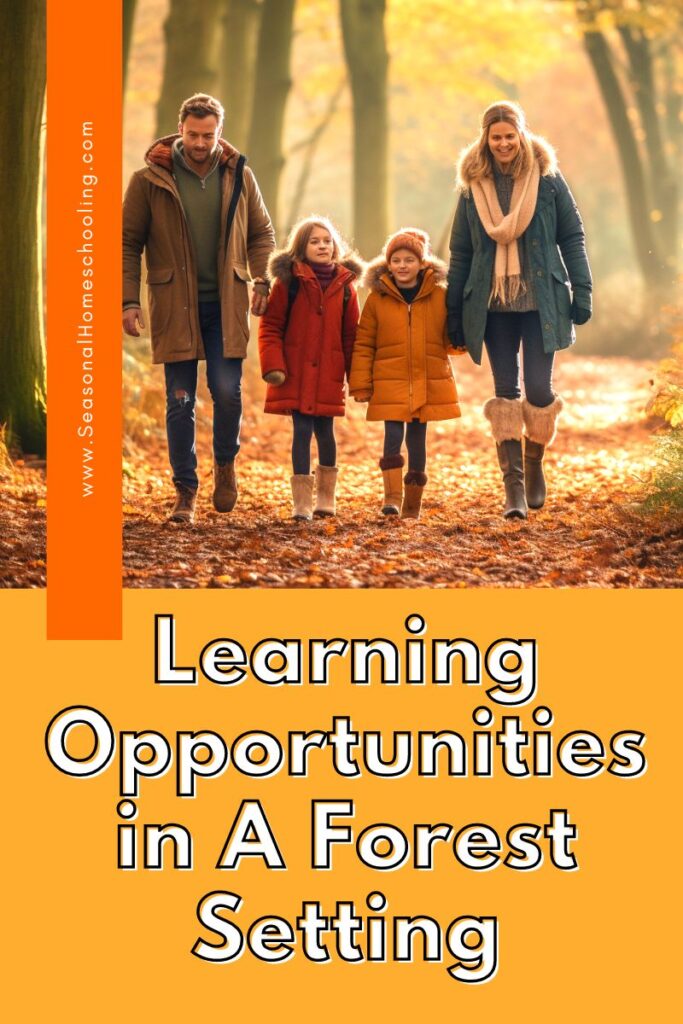
This post contains affiliate links, see my disclosure policy for more information.
Forest School Learning Opportunities
Forests are fascinating ecosystems that offer endless opportunities for homeschoolers to learn about nature, science, history, and more. With its diverse flora and fauna, unique topography, and ever-changing seasons, a forest setting can be an engaging and enriching learning environment for children of all ages. Here are some ideas for incorporating forest learning into your homeschool curriculum:
Nature Observation and Identification
One of the most basic and rewarding activities in a forest school is to observe and identify the different plants, animals, and natural features that you encounter. You can use field guides, apps, and online resources to help you identify species and learn more about their characteristics, habitats, and roles in the ecosystem. You can also keep a nature journal to record your observations, sketches, and notes.
Forest Ecology and Conservation
A forest is more than just a collection of trees and animals – it is a complex ecosystem with many interdependent components. You can use the forest setting to teach your children about topics like life cycles.
You can also discuss the challenges and solutions of forest conservation, such as deforestation, invasive species, and climate change. That conversation might be easier with older children, but it’s never to early to start with your younger children.
Outdoor Skills and Survival
Forest scool can also be a great place to learn practical skills such as camping, hiking, orienteering, and survival techniques.
You can teach your children how to build a shelter, start a fire, purify water, and identify edible plants. You can also discuss the importance of Leave No Trace principles and other ethical considerations of outdoor recreation.
History and Culture
You can use the forest setting to teach your children about topics such as indigenous cultures, logging and forestry, conservation movements, and outdoor recreation trends.
Creative Expression
A forest setting can be a great inspiration for creative expressions, such as writing, art, photography, and music. You can encourage your children to use their senses and imagination to create works of art or literature that reflect their experiences in the forest.
You can also organize forest-themed projects or events, such as a nature scavenger hunt, a tree planting ceremony, or a forest cleanup day.
10 Ways to Incorporate Learning Opportunities in A Forest Setting:
- Go on a nature scavenger hunt
- Learn about tree identification
- Build a fairy house or gnome home
- Study the forest floor
- Observe birds and other wildlife
- Make nature art
- Practice outdoor skills
- Measure and map the forest
- Collect and study samples
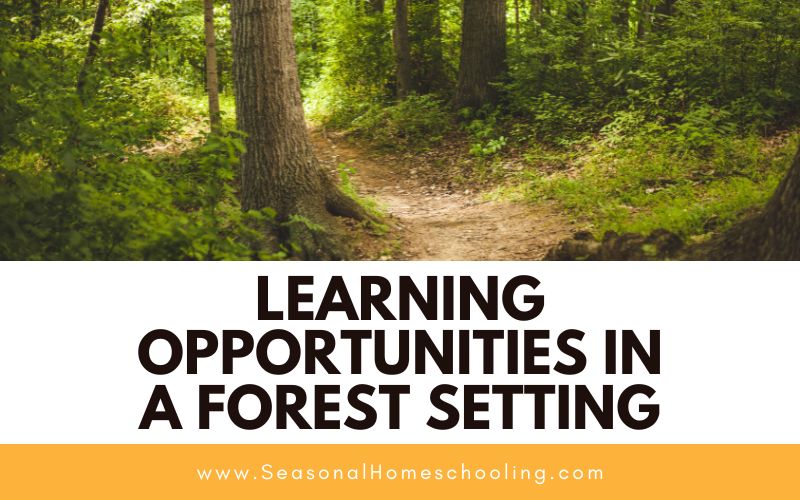
After each forest adventure, encourage your children to share their experiences, observations, and questions. You can also ask them to reflect on what they have learned, how they have grown, and what they want to explore next. This activity can help your children develop communication skills, critical thinking, and self-awareness.

